When the Drone Is in Your Backyard
As a convenient new technology becomes more familiar, public attitudes shift, but unease may still evolve.
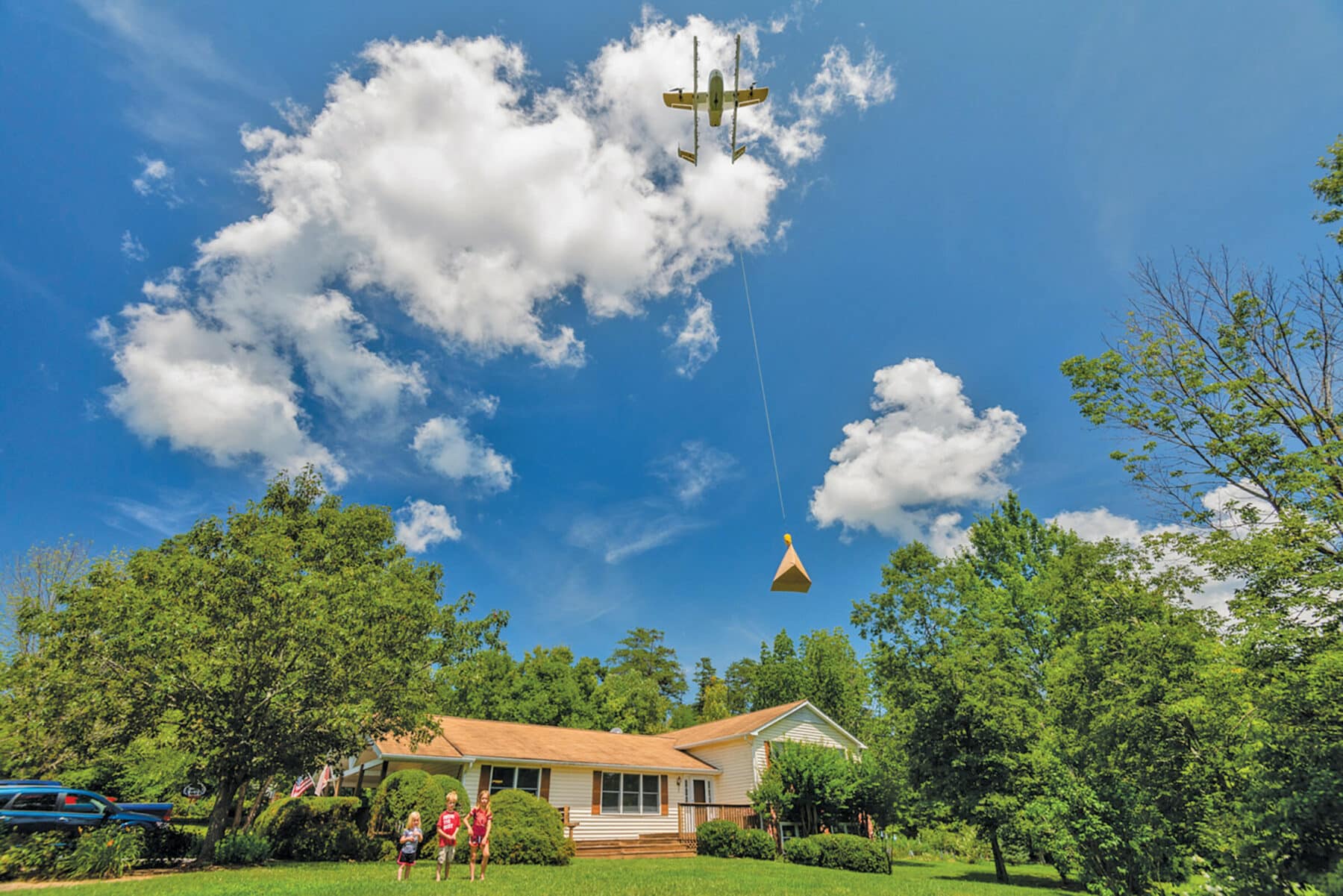
The idea of using unmanned aircraft systems, or drones, to deliver goods to consumers has attracted increasing enthusiasm over the last several years. A handful of companies have launched trial services, and there is a widespread expectation that drone deliveries will eventually become routine. This early point in the emergence of a new technology presents an opportunity to examine the complexity of public attitudes toward innovation.

Christiansburg, Virginia, a town of roughly 22,000 people, is the site of the most advanced residential drone delivery trial in the United States, launched by the Alphabet subsidiary Wing in October 2019. Virginia Tech researchers conducted a survey in November 2020 to assess the community’s sentiment. Wing provided funding for the mailing, promotion, and incentives, but was not otherwise involved.
Previous surveys gauging public interest in drone delivery in the general population have consistently found negative overall attitudes and common concerns about privacy and safety. The Christiansburg survey, however, was the first time public sentiment had been evaluated in a community with direct experience with the technology. Moreover, our survey—in contrast to most surveys on this topic, which include questions about risks and benefits specified by the survey designers—instead asked open-ended questions that allowed respondents to self-identify positive and negative aspects of the technology.
The survey was mailed twice to all residences in Christiansburg and advertised on Facebook; 821 responses met the criteria for analysis.
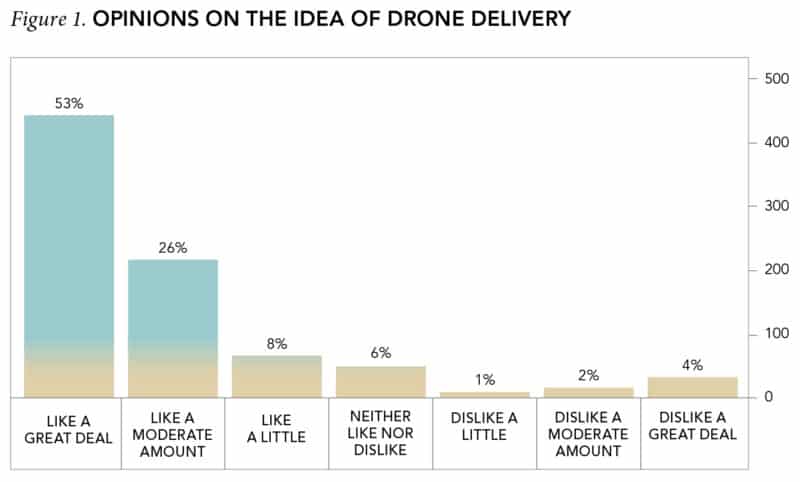
The results were resoundingly positive. Eighty-seven percent of respondents reported positive sentiment about drone delivery, and 89% had already used the service or reported being likely to; 49% reported liking the idea of drones used for package delivery more than drones used for other purposes. These results differ markedly from those of other surveys, in which positive sentiment never exceeded 51% and delivery was a relatively unpopular application when ranked against others, such as emergency management and infrastructure inspection.
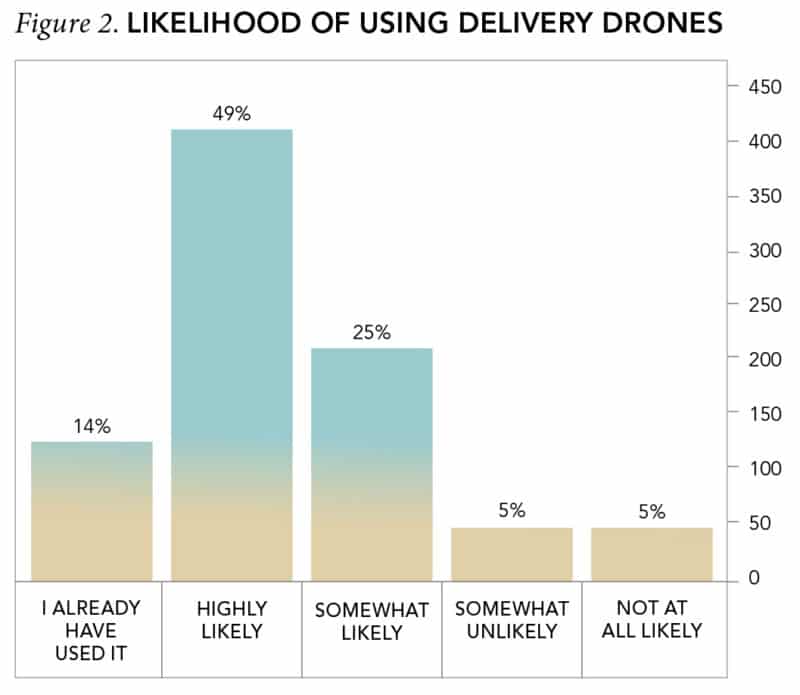
The concerns reported in our survey indicate additional distinctions. In other surveys, respondents’ primary concerns have tended to focus on privacy and safety. For example, 71% of respondents in a 2019 study conducted nationwide were concerned about privacy and 68% were concerned about safety, largely with respect to people and other aircraft. In our survey, the most common negative factor cited was noise, mentioned by 17% of respondents. This suggests that exposure may prompt an evolution in public perception of disadvantages; in our study, having seen or heard a drone was associated with a higher likelihood of mentioning noise.
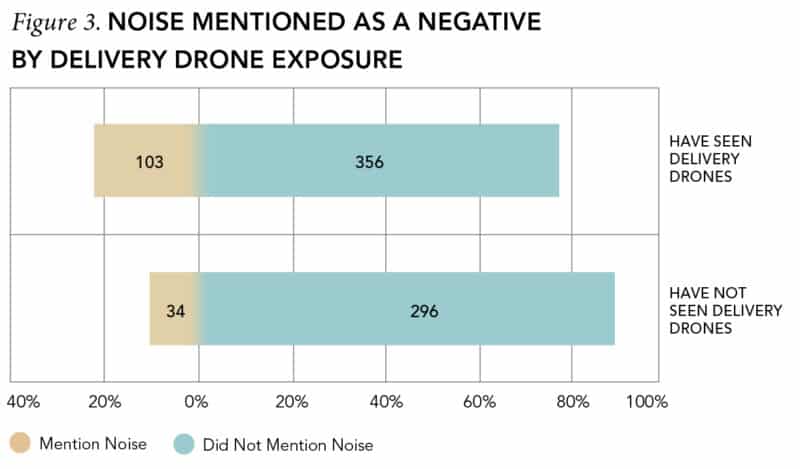
Strikingly, however, 75% of respondents who mentioned noise nevertheless felt positively about drone delivery, and 61% reported being likely to use it. Public attitudes toward technology—perhaps especially larger technological systems—are often characterized by ambivalence: enthusiastic acceptance can coexist with unease about consequences. As a new technology diffuses through society, its tangible benefits become apparent and may even, eventually, become essential for daily life.
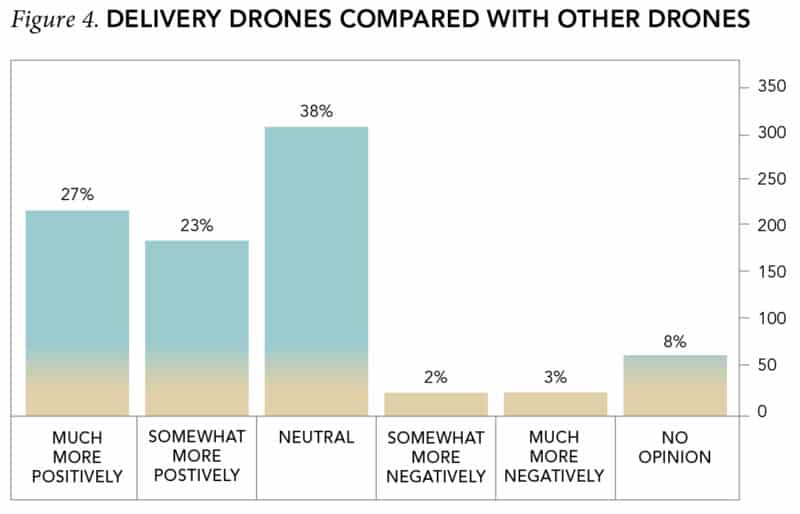
As personal experiences replace speculation, immediate advantages may begin to play a larger role in influencing sentiment—as do immediate disadvantages, such as noise. Meanwhile, disadvantages that are disseminated, more abstract, or beyond an individual’s control, such as safety and privacy, may recede from view, in much the same way that most drivers are not preoccupied by the possibility of auto crashes. (The rise of vaccine hesitancy offers a striking counterexample to this tendency, however.) Other concerns may recede from attention as convenience and tangible benefits conferred by daily use become apparent. Smartphones are an archetypal contemporary illustration of these contradictions—ubiquitous to the point of virtual necessity, and beloved for the convenience they offer and the new capabilities they introduce, they also engender persistent reservations about surveillance, privacy, and the long-term cognitive and social effects of “screen time,” reservations in part borne out by trends and events in recent years.
Strong positive sentiments toward drone delivery in a population that has experienced a relatively mature form of it will surely be encouraging to government policymakers and companies weighing the future of this developing technology. Yet these data also reinforce the complexity of public attitudes toward technology, and the shifts that occur as familiarity increases. People may experience technology in many ways simultaneously. The immediate benefits that a technology confers can coexist with an evolving awareness of disadvantages, some of which individuals have little control over. Such cognitive dissonance seems to go along with the process of technological innovation and diffusion. Future studies of drone delivery should survey populations before and after exposure to probe the nuances of this evolution in more detail.
Explore the full survey results at the “Perspectives on Drone Delivery” report page.
